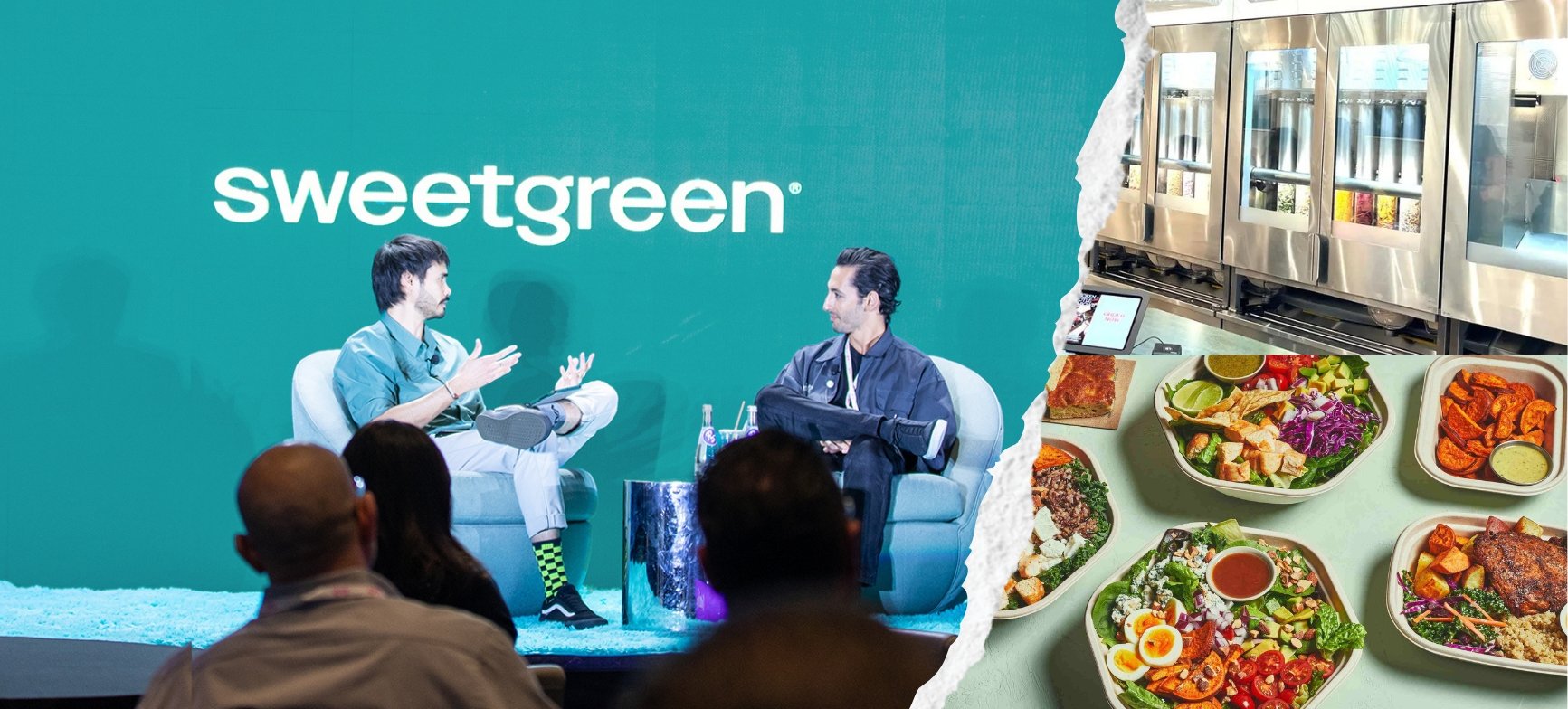Last May, Sweetgreen opened its first Infinite Kitchen in Naperville, Illinois. The robotic kitchen system, designed to reduce labor costs and create a better experience for guests and employees alike, was so successful that the company recently announced plans to roll it out across the country, in both existing and new units. As CNBC reported in June, CEO Jonathan Neman told investors that Sweetgreen expects all its locations to be automated within five years.
In a candid conversation at RestaurantSpaces, Neman sat down to discuss the Infinite Kitchen’s impact so far and what it means for the industry’s future.
Intimacy at Scale
From its inception, Sweetgreen’s mission has been “to build healthier communities by connecting people to real food,” Neman said. As the brand grows, it holds true to this ideal by pursuing what he described as “intimacy at scale”: a relentless focus on its core value proposition of making great food from scratch, no matter how big it gets.
On one hand, this strategy involves an organizational structure that grants significant autonomy to regional leaders familiar with their own markets. On the other hand, it embraces technology’s power to deliver higher-quality experiences.
Which is exactly where the Infinite Kitchen comes in. As Neman explained, Sweetgreen will continue relying on its employees for prep work and adding the finishing touches. Where automation can add real value, however, is in areas like order accuracy, portioning, food safety, and throughput, on top of the obvious labor savings: as Neman pointed out, the minimum wage in California is set to reach $29 in ten years. “We should expect that to happen everywhere else,” he said.
Done right, automation’s benefits are undeniable. At the Infinite Kitchen’s pilot location in Naperville, it makes 500 bowls per hour with almost 100 percent accuracy.
“The food is brighter and tastes better because it's not oxidized,” Neman said. “We have a lot of food safety controls. Our turnover is a fraction of what it is in other stores, because it's an easier place to run. And, of course, we're seeing better margins in those stores. We reported publicly that in its first month of operations, that store ran a 26 percent four-wall margin.”
Then there are the second-order benefits, like reduced renovation costs (in the right locations) and potential licensing opportunities.
“We believe that over time, it's a technology we will monetize beyond ourselves,” Neman suggested. He also expects it will help spur innovation from other brands, helping to “democratize automation” for the whole industry.
Building the Spotify of Food
For Sweetgreen, which has historically been ahead of the curve when it comes to adopting technology, the innovation doesn’t stop with robotic kitchens.
“We do see a lot of use cases for AI in our industry,” Neman said. “We have two proprietary apps we built in our kitchens — one’s a hot prep tool, one's cold prep — that really guide our team members on exactly what food to make when, in order to minimize waste and maximize freshness.”
He also sees exciting potential on the consumer side, including more intelligently executed loyalty programs and personalized menus. With millions of possible food combinations, Sweetgreen might eventually offer what Neman calls “the Spotify of food”: the salad or bowl equivalent of a Discover Weekly playlist, customized for an individual guest based on their order history.
“We then allow you to have more control—to speak to a personal chef and say, ‘Hey, I'm feeling like I want at least 50 grams of protein, low sugar, something spicy,’” he explained. “Boom: it makes it for you.”
Acknowledging that new technology can give restaurants a competitive advantage, Neman said he expects these sorts of advances will eventually become the norm — which is why restaurants shouldn’t lose sight of what really differentiates them from the pack.
“If you had the best food in the world and didn't offer digital ordering today, you'd probably be left behind,” he said. “But if you had the best digital ordering in the world, the best automation in the world, and your food was crap, nothing would matter.”
“We will have an advantage for a certain number of years, and then someone will create that for the industry,” he continued. “It may be us, but it all comes back to the brand and the culture. So it’s important for us to invest as heavily in the art — the magic, the culture, the food, the experience — as we do in the enabler, which is the technology.”
Be Willing to Reinvent Everything
Asked what advice he’d offer to other brands following in Sweetgreen’s footsteps, Neman encouraged a willingness to go back to first principles.
“If you were to take your core value proposition and add automation in, what would you design differently?” he asked. “That was what we were trying to do with our first pilot store. It wasn't just taking the existing Sweetgreen experience and plopping it in. It's a different experience. We were willing to reinvent how we operate entirely. We introduced kiosk ordering, we introduced concierge ordering, and we brought the prep to the front of the kitchen. So we totally changed that workflow.”
“That different thinking approach is critical in making this work,” he added. “Every brand really has to think about their core value proposition. What do consumers love about them, and how do they use technology to accelerate and empower that?”
As for what excites him about the future, Neman is enthused about Sweetgreen’s plans to reach more communities while broadening its menu, ultimately democratizing food in a new, meaningful way.
“The longer-term vision is how we can leverage these gains to bring down the price of the food,” he concluded. “If you have delicious food that's accessible, affordable, and convenient, then you have a really killer product.”

Posted by
Chain Restaurants Reimagined.
The Retreat to Reimagine Restaurant Development, Design + Technology.
April 12-14, 2026 | Miami, FL






-3.png)

-3.png)
-4.png)
-3.png)

Comments